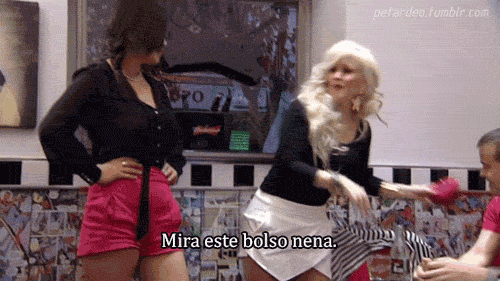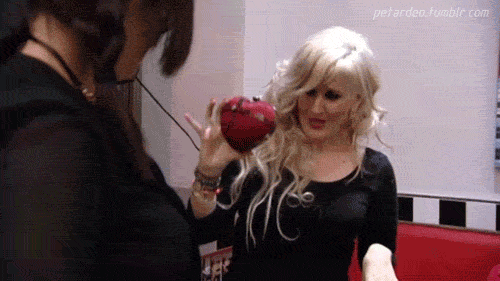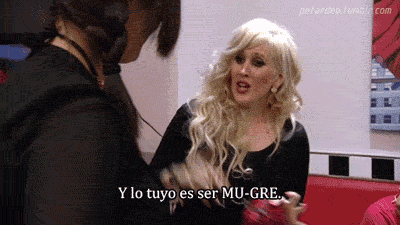
Image via Flickr
There’s a goofy neurological trick you can play on your brain that makes you feel like you have a super long nose. It’s called the Pinocchio Illusion and all you need to make it happen is a vibrator and a friend.
Here’s how it works. Person A closes her eyes and places the tip of her finger on her nose. Person B applies a buzzing vibrator to the tendon that connects the bicep to the inner side of the elbow of the arm that’s touching the nose. The vibration on the tendon stimulates the muscle fibers in such a way that tricks Person A’s brain into thinking that her arm is extending, but since Person A’s index finger tells her brain that it’s still connected to the tip of her nose, the brain does a quick and dirty calculation (in the absence of visual data) and concludes that her nose must be growing super long. It’s fucking crazy. Try it.
According to Princeton University neuroscientist Michael Graziano, this phenomenon is indicative of the key aspect of the human mind. Our brains create models of the world around us, including our bodies, in order to be attentive to the various signals we get from our senses. So in the Pinocchio Illusion, your brain creates a model of what your body looks like and the model falls apart due to the conflicting stimuli. Our brains might be exceptionally good at making models, but they’re never perfect replicas of what’s happening in the world, just fast and loose sketches to make sense of things.
There’s a funny consequence to our brains’ proficiency in model-making, Professor Michael Graziano argues in his book Consciousness and the Social Brain, which came out this month. That consequence is what we call consciousness, the ineffable ungraspable “I,” the magic sauce of Being that defines our essential humanness. From Descartes’s “Cogito ergo sum,” to Kant’s theory of a priori forms, to Taoist, nondualist Vedantic whatever, the origin of consciousness has been, you know, a real head-scratcher. And Professor Graziano’s theory proposes an exceptionally clear explanation of what’s going on in our domes’ pieces every day of our short little lives.
So to the question: Are we ordained by our divine creator or are we just delusional lumps of carbon and guts? Professor Graziano concludes something closer to latter. But it’s not delusion that makes our brains aware. It’s a highly functional adaptive strategy. What we think of as sentience can be explained by what he calls the Attention Schema Theory, and I talked to him on the phone this week to understand what his theory of a neurological basis for our consciousness means today and what it could mean in the future.
VICE: Can you describe what exactly your investigation into consciousness is?
Professor Michael Graziano: Here’s a quick background. I can be conscious that I am me and I am human. Whatever that consciousness is, is an experience. What I am asking is what set of information is that consciousness. What does it mean to have an actual subjective experience of something?
What’s unique about your method of inquiry? This question sounds like something a lot of people have tried to figure out.
To start off, many scientists are asking the wrong question. They’re asking, “What does it mean to have the magical inner feeling?” You start with the assumption that there’s magic and then you start experimenting. The better question is how and for what adaptive advantage do brains attribute that property to themselves? And right away that puts it into the domain of information processing, something that can, in principle, be understood.
How is it that the cognitive machinery in our brains accesses internal data and arrives at a conclusion and can sometimes report, “I have experienced, I am aware of something.” Not just “that is blue,” but “I am aware that that is blue.”
OK, so how do brains do that?
Brains construct models, informational models of all kinds of things, in fact it’s one of the things brains do best, make models of the external world and models of things going on inside your body.
The theory at heart, the reason why brains attribute the property of awareness to itself, is because the brain is essentially constructing a model to monitor the fact that it is paying attention to that object. So attention is a physically real data-handling method and awareness is the brain’s cartoon sketch that’s used to keep track of what it’s doing. That it can use to keep track of what it’s doing.
Wait, so that’s it, your brain creates a model, and therefore you are an aware, sentient, nonrobot?
So let’s think about what the physical project of attention is: there’s an agent, a brain, a being that’s focusing its processing power on a particular set of signals that neuroscientists call attention; the signals might pertain to the sandwich you’re holding. There’s an agent and there’s a sandwich, and there’s a relationship between the two: that is, the agent is focusing its resources on the sandwich. That’s attention.
So when you build a model of that it will have a large amount of information about the agent—who you are, where you are, your memories, your information about yourselves—that model should contain information about the sandwich, and it should contain information about the relationship between the two. And, crucially, the model will have information about what it means for an agent to focus attention on a thing. What I’m saying is that there is information in the brain, a large dossier with lots of descriptive information that there’s a you, and there’s a sandwich and a specific relationship: you are aware of the sandwich.
And there’s some recursion involved. In some sense, awareness of self and awareness of some object are kind of the same thing. The underlying formula is very similar.
One thing that I’m surprised by is how similar and useful language is in conceiving these models and structures. Specifically the sentence “I see blue.” Three aspects of this cognitive function are the three essential aspects of the sentence: subject, verb, object. Is that an accident or something hardwired into our brains?
I think there is a deep connection between language and all these other issues. One aspect of this theory is that there’s a constant evolutionary change and what may have started out as a simple model to help control attention then evolved into a way of of keeping track of other people’s state of attention and then evolved into a key part of our social machinery. An outgrowth of our social capability is language capability, and in fact, the main language area of the brain—it’s called the Wernicke's area—is basically an evolutionary outgrowth of the same regions involved in social thinking that we think might be involved in attributing awareness in ourselves and others. So the actual brain mech[anics] of language have a very deep connection to all these issues of consiouness and awareness.
OK, well can we make robots self-aware? Can we turn Pinocchio into a real boy?
A robot can do a bunch of things, but it does not have the information to report: “I have experience, I have an inner experience.” It does not have that algorithm. But I think that’s programmable, and it think it’s coming.
Here’s another thing I suspect that will happen in 100 years: imagine a device that can scan your brain in enough molecular detail to simulate or recreate that data in artificial hardware. There is a you—your mind and memories that are now copied almost like a file on a computer system. Now you can live in a simulated world of your choose. The reason why I think this is likely [to] will happen is that people are obsessed with living as long as possible. this is essentially the invention of [an] electronic afterlife. Another reason I think this will happen is because if there’s one thing people spend the most money on, it's entertainment, and this is like putting yourself in a virtual playground. I think this is an inevitable consequence of understanding awareness. So forget about robots that are aware; imagine putting yourself into a simulated world and have it feel real.
More Brain Stuff:
War in Our Heads: A Chat with Jonathan Moreno
The Science Behind Tripping Balls
Reading Brain Waves































